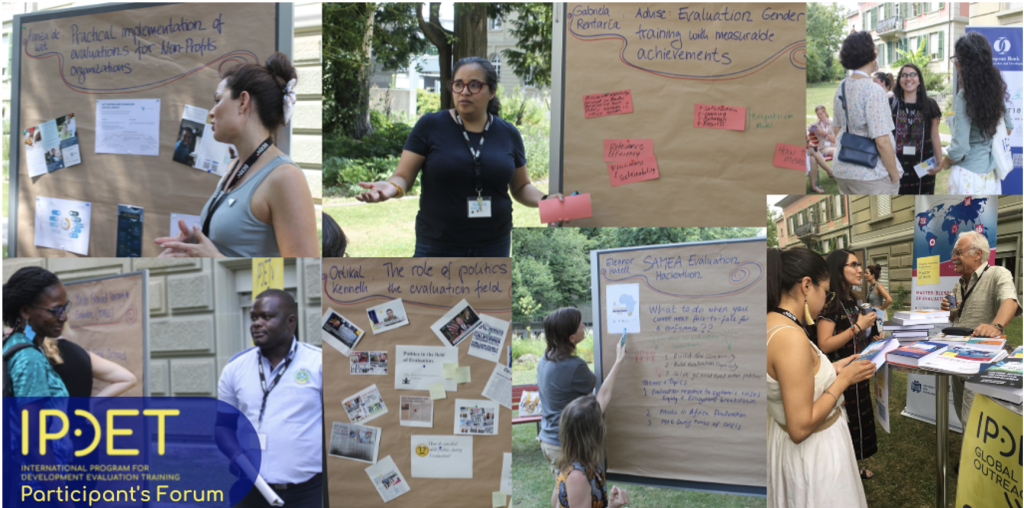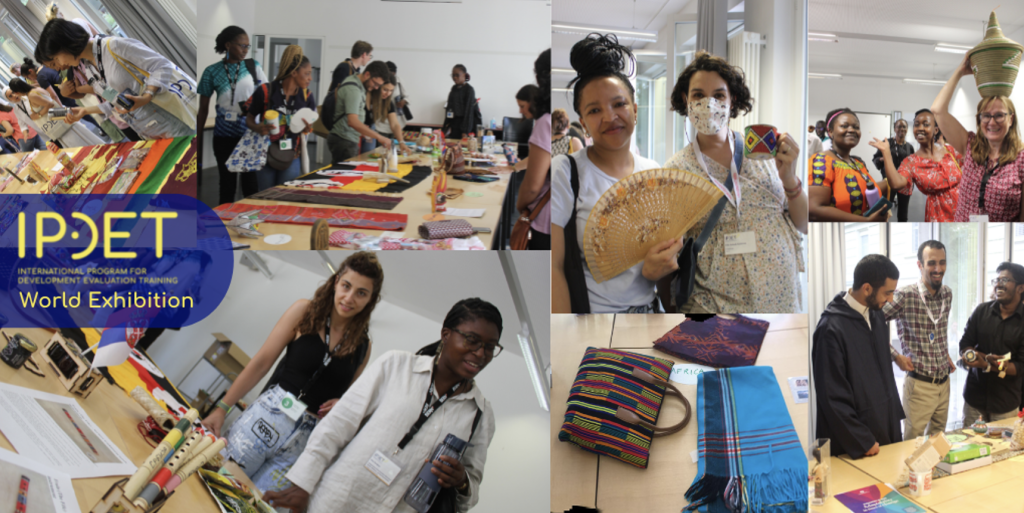This week’s posts highlight reflections from the Global Evaluation Initiative (GEI), a global network of organizations and experts working together to support the strengthening of monitoring, evaluation, and the use of evidence in developing countries. GEI uses an integrated systems-based approach and works closely with governments, evaluation professionals, and other stakeholders on efforts that are country-owned and aligned with local needs and perspectives.

Esteemed colleagues!
We are Laszlo Szentmarjay (Global Outreach Coordinator) and Vanessa Krieger (Marketing & Communication Officer), from the International Program for Development Evaluation Training (IPDET), an implementing partner of the Global Evaluation Initiative (GEI). Today we want to share with you two “Hot Tips” on how to create spaces for evaluation community members to build connections that last beyond your event.
Since the beginning of the program in 2001, more than 4,000 individuals with a variety of backgrounds have participated in IPDET, bringing together evaluation knowledge from all over the world. These alumni form the IPDET community, which is centered around mutual learning and a sense of belonging.
But what makes a community a community? And how do you build a community?
Gilchrist for example stated in 2009 that “community” represents a collective resource, where members (users) connect and have feelings of belonging, often beyond geographical boundaries. Community members join when they have an interest in working together and deepening their knowledge. According to Wenger and colleagues they may not work together regularly, but value the joint practice – which often goes beyond the boundaries of just evaluation.
Therefore, it is important to create spaces that foster a sense of belonging and where people can meet and exchange knowledge. Because our latest in-person program in Bern/Switzerland had 138 participants from 63 countries, we took advantage of this heterogeneity and came up with two special events meant to build community: the Participant’s Forum and the World Exhibition.
Here are our Hot Tips on how you can add similar activities to your event to contribute to community building.
Hot Tip #1:
Create opportunities for participants to share knowledge in a more informal way that fosters discussion, feedback, identification of shared challenges and networking. During our last training, we created the “Participant’s Forum” where participants were encouraged to create poster presentations or “market stands” around the question: “How can you prevent crises or promote democracy with the help of evaluation?” Contributions fell into three main categories: knowledge sharing, seeking advice, and seeking cooperation/training. Participants were encouraged to walk around and discuss the ideas presented on the posters/stands (see pictures below). This created an opportunity for a more informal exchange of information and helped participants get to know each other, find common ground, and explore new ideas.

Hot Tip #2:
Build connection around cultural diversity. Sixty-three countries were represented at this year’s IPDET Program, bringing together a rich diversity of cultures, customs, and languages. To help build connection and a sense of belonging for our participants, IPDET encouraged participants to bring cultural and country related items from home to display, discuss (and even exchange) during the “World Exhibition” (see pictures below). Learning about others’ country, culture and language lets participants have more meaningful interactions, celebrating differences as well as similarities. The sense of belonging – an important part of community building – comes from an individual’s feeling of acceptance and inclusion in a group despite differences.

Our participants provided feedback that both the Participant’s Forum and the World Exhibition helped them to get to know each other and start feeling like part of a community. The unique experience that each individual contributed, and the joint willingness to learn and grow, not only strengthened the IPDET Community, but contributed to strengthening the global evaluation community, as well.
Rad Resources:
Gilchrist, A. (2009). The Well-Connected Community: A Networking Approach to Community Development (2. ed.). Policy Press.
Wenger, E., McDermott, R., & Snyder, W. M. (2002). Cultivating Communities of Practice: A Guide to Managing Knowledge. Harvard Business School Press.
Acknowledgments and further resources:
A special thanks goes to all contributors of the IPDET Participant’s Forum and World Exhibition. You can find more information about the activities here.
The American Evaluation Association is celebrating Global Evaluation Initiative (GEI) Week. The contributions all this week to aea365 come from GEI members. Do you have questions, concerns, kudos, or content to extend this aea365 contribution? Please add them in the comments section for this post on the aea365 webpage so that we may enrich our community of practice. Would you like to submit an aea365 Tip? Please send a note of interest to aea365@eval.org. aea365 is sponsored by the American Evaluation Association and provides a Tip-a-Day by and for evaluators.
